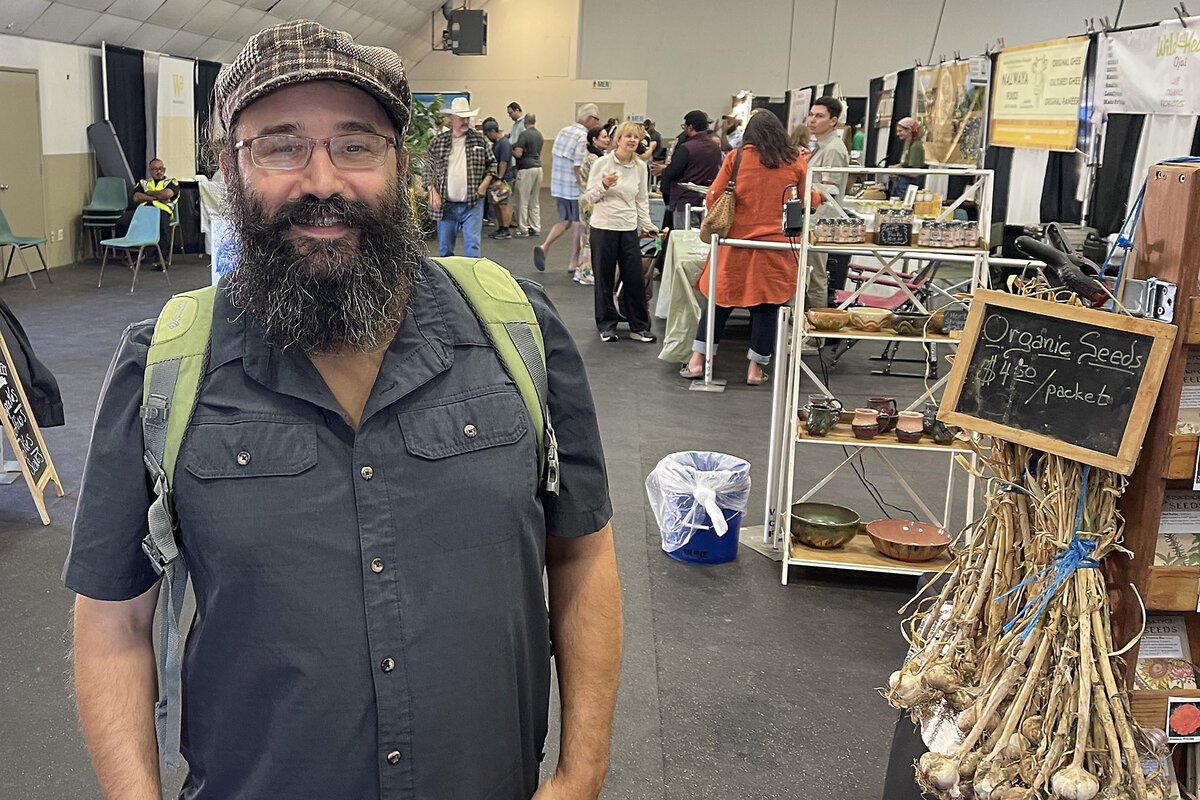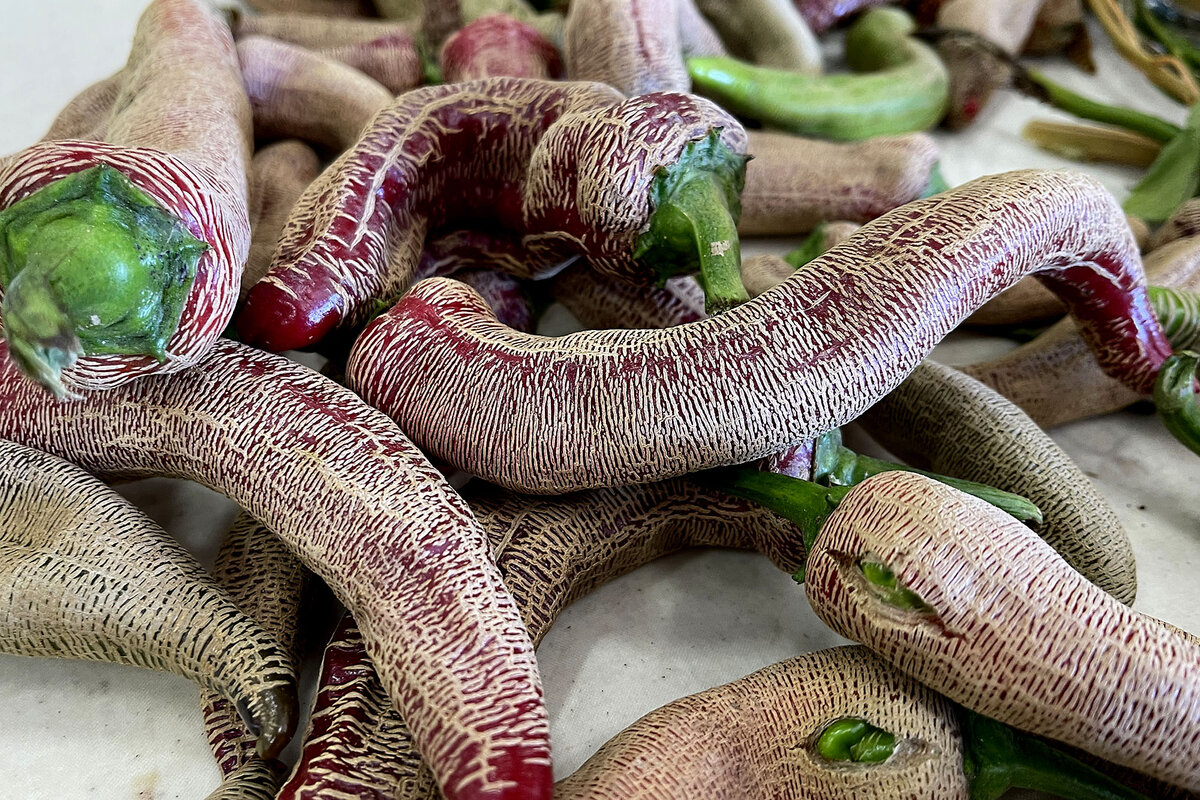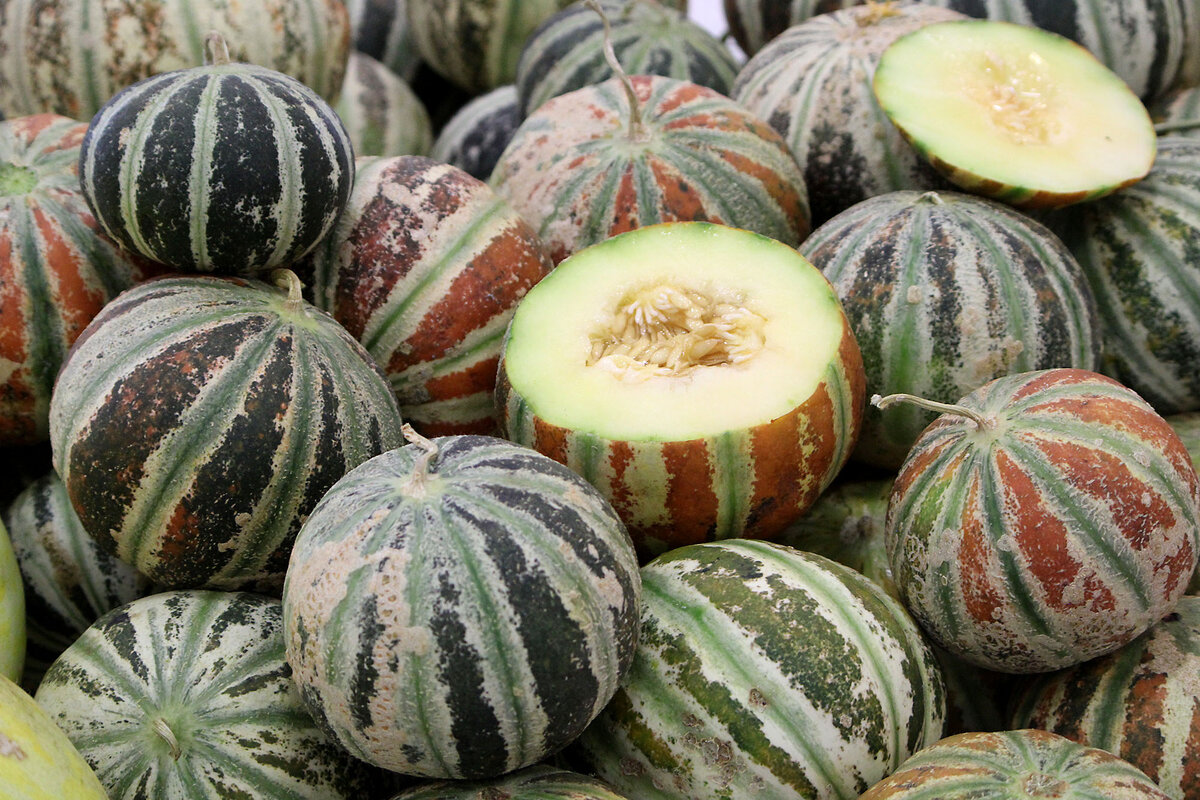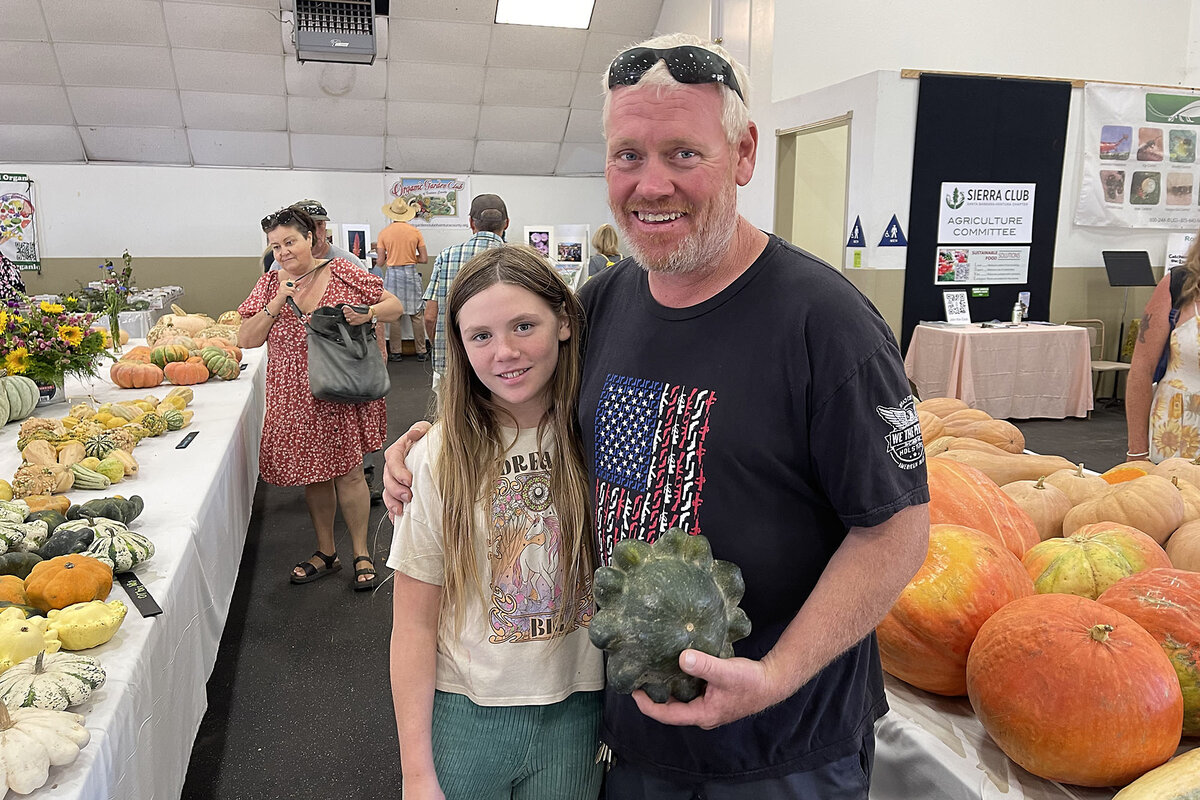With heirloom seed swaps, gardeners grow community – and biodiversity
Loading...
| Ventura, Calif.
At the National Heirloom Exposition in Ventura, California, one of the largest gatherings of seed enthusiasts in the United States, visitors are greeted by an enormous pile of twisted and gnarled squash.
There’s nothing uniform about these pumpkins and gourds, in their shades of yellows and grays and oranges. And that’s the point. Public seed gatherings like this, whether in big exhibit halls or small town libraries or at local farms, are increasingly popular celebrations of plant biodiversity at a time when many experts worry about a dramatic reduction in the variety of plants the world grows and eats. Here, standardization is out. Uniqueness, and the related stories of seed and place, is in.
Seed enthusiasts can be motivated by food independence or climate change resilience or just the desire to grow – and taste – a really great watermelon. But what ties them together, says Bevin Cohen, a leader in the heirloom seed movement who organized the expo’s seed swap, is the joy of joining with others to grow a better future.
Why We Wrote This
A story focused onHeirloom seed saving, swapping, and celebrating are booming among gardeners, farmers, and everyday people – something experts see as important for biodiversity and food security.
“In any other situation, these types of people, we might not be sitting next to each other and sharing a meal because of the differences we might focus on. But here, that all just washes away,” Mr. Cohen says.
The reasons for the growing popularity of these seed swaps – and of heirloom or heritage seeds in general – are myriad.
For decades now, policymakers, academics, and agriculturalists have recognized the importance of preserving a wide variety of seeds. At the height of the Cold War, the U.S. government decided to start banking seeds for staples such as corn and soybeans.
In the mid-1990s and early 2000s, various United Nations organizations began warning about dwindling seed varieties. They also started suggesting that the global agricultural system, narrowed to growing plant hybrids best for mass harvest and shipment, had led to a dangerous decline in food crop biodiversity. It was a situation policymakers worried could threaten the global food supply. Countries around the world got together to donate seeds to the Svalbard Global Seed Vault, a highly protected underground bunker of global food security located in the Norwegian Arctic.
But in recent years – especially since the COVID-19 pandemic – there’s been a growing movement of everyday individuals to get in on the seed-saving action, as well.
“There is a real urgency around how we think about food and how we access it,” says Mike Bollinger, executive director at Seed Savers Exchange, an Iowa-based nonprofit focused on saving and sharing seeds.
And heritage seeds are particularly valuable for biodiversity, seed experts say. These types of seeds are naturally pollinated and have been passed down from one generation to the next, traced back for at least 50 years.
Swapping seeds at the library and beyond
During the pandemic, interest in gardening spiked as people sought food independence and new hobbies. People rushed to buy seed packets, but often found them sold out. Mr. Cohen, who also runs a seed company, sold more seeds between March and May of 2020 than he had in the previous five years combined.
But slowly, those involved with seeds say, everyday people started to remember something humans have known for millennia, and a niche group of growers in the U.S. have been advocating for decades: Plants don’t need to start off in little paper packets, or in plastic containers at the nursery. It’s possible to save seeds from one season to the next – to share them, plant them, and swap them.
Indeed, Mr. Bollinger says, Seed Savers Exchange was formed with the idea that the best way to preserve a rich variety of food plants was to get as many seeds as possible into household gardens. Today, the organization keeps the largest nongovernmental seed bank in the country, with some 20,000 varieties – all ready to be exchanged and grown across the U.S.
Over the past decade, many public libraries and other groups have started seed-lending programs. The idea is that residents can “borrow” seeds for a season, plant them, and then return seeds from harvested fruits and vegetables.
Rebecca Newburn founded the Seed Library Network to help consolidate these efforts, with seed packets available everywhere from universities to neighborhood Little Free Library boxes. The interest, she says, has been “growing and growing” since she developed the idea in the late 2000s. Last year, more than 2,200 people from 35 countries registered for the online Seed Library Network summit.
“People come to seeds from different places and connect to them in different ways,” Ms. Newburn says.
Some growers are worried about climate change, she says, and want to test out varieties that might fare better in a hotter, drier, or wetter environment. Others worry about corporations controlling so much of the food supply.
The most recent data available from the U.S. Department of Agriculture shows that, from 2018 to 2020, two companies – Corteva and Bayer (formerly Monsanto) – provided more than half of the corn, soybean, and cotton seed sales in the U.S. Intellectual property laws often prohibit farmers from saving these hybrid seeds from one season to the next. (Companies say that this has allowed them to spend more on research and development efforts that allow for improved crop productivity.)
Four agrochemical companies now control the vast majority of commercial seeds in the U.S., along with most of the insecticides, herbicides, and fungicides sold for agricultural use, as well as the digital technology used for harvest.
Seeds with a story
All of that, experts say, has led to larger yields and improved efficiency in the agricultural sector. But it also raises concerns about “seed freedom” – an important theme at last month’s Heirloom Expo.
There’s a place for mass-produced food, says Lisa Riznikove, who brokers heirloom grains and beans as the founder of Foodocracy, a nonprofit organization based in California that promotes small-batch farmers and food producers. “But those things were not bred to be tasty or nutrient-dense,” she says. “They were bred for high yield. That isn’t necessarily the tastiest, nor is it necessarily the most nutrient-dense version of that plant.”
Ms. Riznikove is running a booth at the Heirloom Expo, inside a large vendor hall. She knows all the stories behind her seeds, whether it’s a seashore black rye that was popular in the 1800s or a tepary bean that can be traced back 5,000 years through archeological digs in Mexico.
Indeed, heirloom seeds have histories; they are from a specific place, grown by specific people. A great-grandmother carried them from the old country. A neighbor offered them to share an important flavor from her past.
“Heirlooms are really varieties that have a sense of place and time. They have a story behind them,” says Michelle Johnson, a media specialist with Baker Creek Seeds, the largest heirloom seed company in the U.S.
They also allow for self sufficiency. That’s why Will Anderson and his family traveled to this expo from Phelan, a rural community in California’s high desert.
Growing your own food is a lot of work – but it’s also incredibly rewarding, he says. “We go out to the garden and relax, even though it takes all the time to water. But when you’re done ... it’s nice to see everything you did finally pay off.”
Ali Martin reported from Ventura, California, and Stephanie Hanes from Northampton, Massachusetts.










